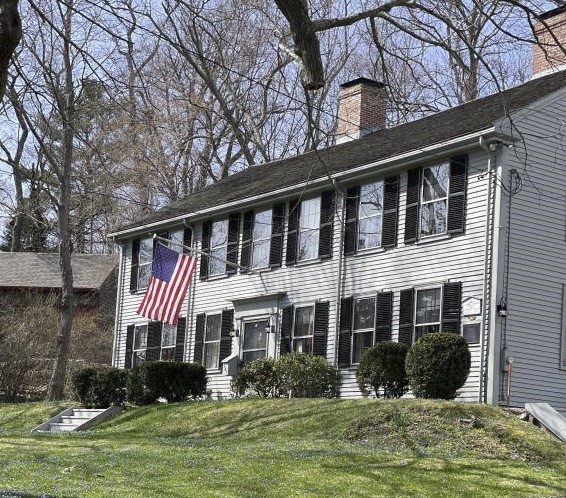The Benjamin and Mary Lincoln House, 1721 & 1771

181 North Street
The Benjamin and Mary Lincoln House, 1721 & 1771
The Benjamin Lincoln House, acquired by the Hingham Historical Society in 2020 with assistance from the Town of Hingham Community Preservation Funds, is a National Historic Landmark and was home to multiple generations of the Lincoln family for over three centuries. Its most venerated owner, General Benjamin Lincoln (1733-1810), was part of George Washington’s command during the American Revolution. He played a decisive role at the battle of Yorktown, where he personally accepted the surrender of the British Army immortalized in John Trumbull’s The Surrender of Lord Cornwallis which hangs in the U.S. Capitol Rotunda. Members of the Lincoln family have been in Hingham since 1636, chiefly as artisans and farmers and brewers, but Gen. Lincoln’s father, Colonel Benjamin Lincoln (1699-1771), rose to local prominence as a town selectman and representative to the General Court and appointment to the Governor’s Council in 1753. His sixth child but oldest son, General Benjamin Lincoln, followed his father into public service, and was appointed Town Clerk in 1757 and represented Hingham at the Massachusetts General Court from 1772 to 1774. Lincoln served under George Washington in all three major battles of the American Revolution including Saratoga, Charleston and Yorktown. He was known for his ability to manage troops and supplies and in his later years, as Secretary of War was called upon to quell Shay’s Rebellion in western Massachusetts. He died in this home in 1810. The size and location of this home – on a rise at the edge of Hingham Square – testifies to the Lincolns’ prominence in the community. Remarkably, it also contains a rare example of a well-preserved servant’s room in the attic, whose insubstantial and unfinished quality contrasts with the refinement of the family’s rooms below. Prior to the abolition of slavery in Massachusetts in 1783, written record reveals that three enslaved individuals – Flora, Juba and Cato resided in the home. Architectural historians have studied the home and detail and been able to piece together a chronology of the existing structure that includes the construction of the west side of the home in 1721 and then an addition by Benjamin and Mary Lincoln in 1771 that gives us the layout we see today. It is clear that in constructing the addition in 1771, Benjamin and Mary demolished the family’s original “ancient” structure (c. 1665) and reused the materials. Evidence of this evolution can be seen in the attic. Seven generations of Lincolns lived in the home after the Major General and Mary and stewarded the home, its furnishings and its collections to create the museum you will experience today. Aside from the introduction of indoor plumbing and the creation of a first floor bathroom in the late 1990s, the home is structurally the same as it was in 1771.
(adapted from The Benjamin and Mary Lincoln House by J. Ritchie Garrison and Jeff Klee, Vernacular Architecture Forum)